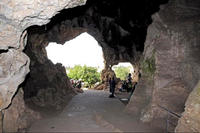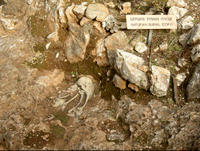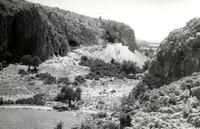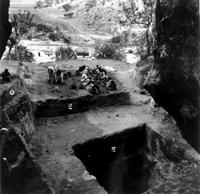You are in: Middle East -> Israel -> Sites of Human Evolu... , and traditional search or Image Gallery will yield results of this site only
Sites of Human Evolution at Mount Carmel: The Nahal Me’arot / Wadi el-Mughara Caves
| Site number: | 1393 |
|
| Type of site: | Cultural | |
| Date of Inscription: | 2012 | |
| Location: | Middle East, Israel, West Mount Carmel | |
Up to 75 images are shown here. Click on each for more details or on Image Gallery for more images.
| Description: | On the western slope of the Mount Carmel range, the property includes the cave sites of Tabun, Jamal, el-Wad and Skhul. It covers 54 ha and contains cultural deposits representing 500,000 years of human evolution with evidence of burials, early stone architecture and the transition from a hunter-gathering lifestyle to agriculture and animal husbandry, demonstrating the unique existence of both Neanderthals and Early Anatomically Modern Humans within the same Middle Palaeolithic cultural framework, the Mousterian. As such, it has become a key site of the chrono-stratigraphic framework for human evolution in general, and the prehistory of the Levant in particular. Ninety years of archaeological research have revealed a cultural sequence of unparalleled duration, providing an archive of early human life in south-west Asia. --WHMNet's description is from WHC Site, where additional information is available. | |
| Nahal Me’arot Nature Reserve is a site of human evolution at Mount Carmel in Haifa, Northern Israel. It has four caves such as Me’arat HaTanur (the Oven Cave), Me’arat HaGamal (the Camel Cave), Me’arat HaNahal (the Stream Cave) and Me’arat HaGdi (the Young Goat Cave). The site was proclaimed as universal value by UNESCO in 2012. The site indicates the prehistoric man’s settlements and unique evidence of a first burial. --Wikipedia. Text is available under the Creative Commons Attribution-ShareAlike License. | ||
| Source: | http://whc.unesco.org/en/list/1393 | |
| Reference: | 1. UNESCO World Heritage Center (http://whc.unesco.org/en/list/1393). 2. Wikipedia. | |














